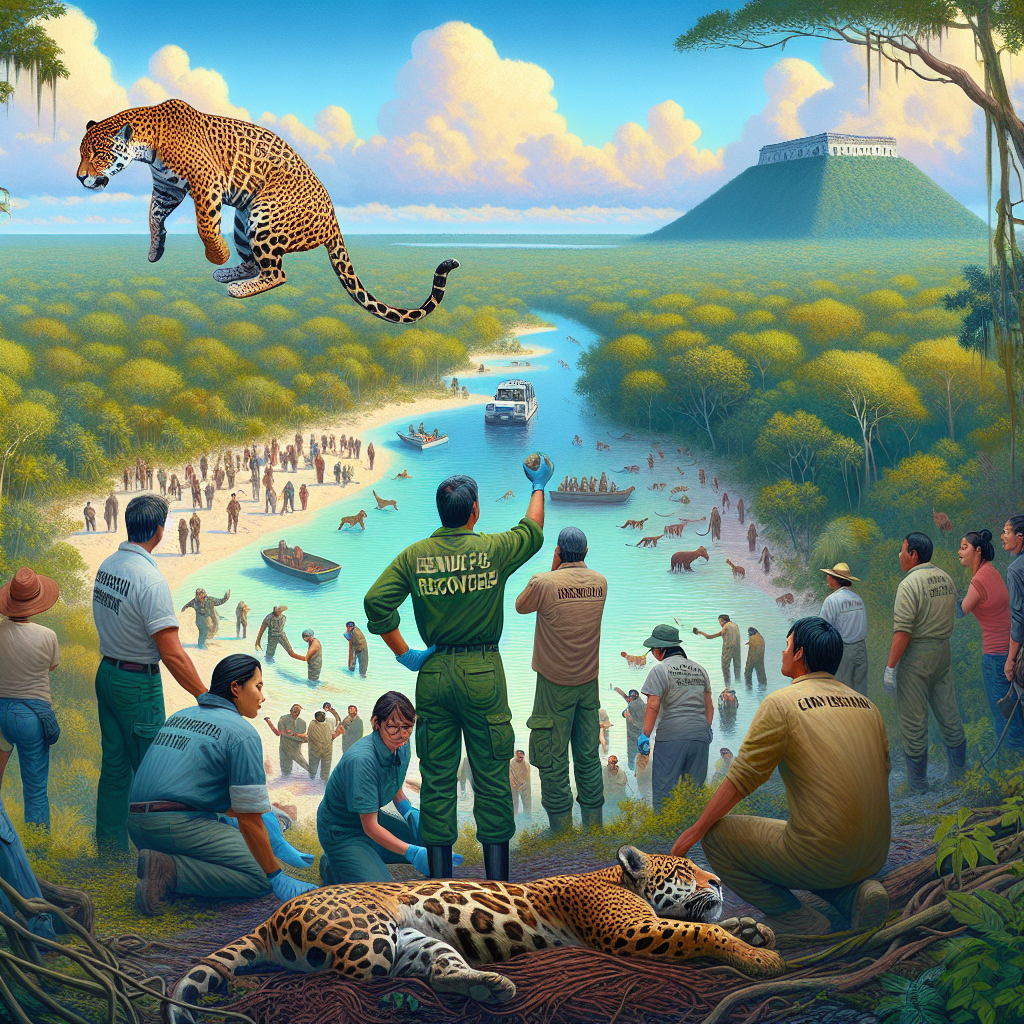Inspiring Change: Successful Rescues of Jaguars and Their Impact on Tulum
For centuries, jaguars have embodied strength and beauty in the lush jungles of Mexico’s Yucatán Peninsula, yet their populations face critical threats. The majestic feline, known scientifically as Panthera onca, plays a crucial role in maintaining the ecosystem’s balance. In Tulum, initiatives aimed at the rescue and rehabilitation of jaguars not only safeguard these incredible big cats but also enhance local conservation efforts, ecotourism, and educational outreach.
The State of Jaguars in Tulum
Historically, Tulum has been home to a thriving population of jaguars, vital predators that contribute to the biodiversity of the region. However, factors like habitat destruction, poaching, and human-wildlife conflict have led to significant declines in their numbers. Recognizing this crisis, various organizations and local stakeholders have united to implement strategies for their protection and recovery.
Successful Rescue Initiatives
1. Collaboration with Local Authorities
Rescue efforts for jaguars in Tulum often begin with collaboration between governmental bodies and wildlife organizations. Agencies such as SEMARNAT (Secretariat of Environment and Natural Resources) work closely with NGOs like the Jaguar Rescue Center to monitor jaguar populations and coordinate rescue operations. This collaborative framework enables rapid response to incidents involving injured or trapped jaguars, ensuring timely veterinary assistance and rehabilitation.
2. Creation of Wildlife Corridors
One successful strategy in Tulum’s jaguar conservation efforts is the establishment of wildlife corridors. These corridors allow jaguars and other wildlife to traverse fragmented habitats safely. Organizations have consolidated land to connect habitats, which reduces human-wildlife conflict by minimizing encounters. These efforts not only boost jaguar populations but also enhance genetic diversity, vital for their long-term survival.
3. Rehabilitation and Release Programs
Captive jaguars rescued from illegal hunting or injury undergo rehabilitation before being released back into the wild. Facilities equipped with veterinary services assess their health and conditioning. The goal is to reintegrate these animals into their natural habitat so they can contribute to the local ecosystem. Training initiatives, focusing on teaching jaguars survival skills—like hunting and avoiding human settlements—play a crucial role in their successful rehabilitation.
Community Engagement and Education
Raising awareness about the importance of jaguars has become pivotal in Tulum’s conservation strategy. Educational programs targeting local communities emphasize the ecological significance of jaguars. Schools collaborate with wildlife organizations to organize workshops, wildlife tours, and educational seminars, enhancing understanding of jaguars and fostering a sense of stewardship among residents.
1. Involvement of Local Communities
Engaging local communities in conservation efforts yields significant results. Initiatives support local livelihoods by promoting sustainable practices, such as ecotourism. By involving residents in jaguar monitoring and rescue operations, these programs enhance local stakeholders’ investment in wildlife conservation. Recognizing the economic benefits of preserving jaguars strengthens community support for ongoing efforts.
2. Ecotourism as a Tool for Change
Ecotourism serves as a viable avenue for promoting jaguar conservation in Tulum. Tour operators incorporate jaguar watching into their offerings, boosting visitor interest in these majestic creatures. Responsible tourism practices ensure that tourism revenue supports conservation initiatives while educating tourists about local ecosystems and the critical roles of apex predators like jaguars.
The Impact of Successful Rescues
The successful rescue and recovery of jaguars in Tulum extends beyond the animals themselves. These operations have far-reaching impacts on the environment, economy, and community well-being.
1. Ecological Benefits
By safeguarding jaguar populations, conservation efforts help maintain prey populations, controlling herbivore numbers and promoting healthy plant growth. Healthy ecosystems yield substantial benefits, such as improved water quality, increased biodiversity, and enhanced resilience against climate change.
2. Economic Growth through Ecotourism
The increased interest in jaguar conservation has translated into a burgeoning ecotourism sector in Tulum. By visiting the area, tourists contribute economically to local businesses and conservation efforts, creating a sustainable model that emphasizes the coexistence of wildlife and humans. This influx of revenue supports ongoing wildlife rescue missions and ecological preservation projects.
3. Strengthened Local Identity and Community Cohesion
Successful conservation initiatives contribute to a renewed sense of identity for communities in Tulum. Residents take pride in their role as stewards of the environment, fostering social cohesion. Community-led projects celebrating local culture and natural heritage enhance local tourism and embody the spirit of conservation, creating a united front against external threats to wildlife.
Challenges Ahead
Despite the notable successes, challenges remain in the fight for jaguar conservation. Ongoing threats from urban development, agriculture expansion, and poaching persist. There’s a pressing need for continued funding, community engagement, and government support to enhance existing initiatives and develop new strategies.
1. Continuing Habitat Loss
As tourism grows in Tulum, pressure on natural habitats intensifies. Efforts to balance development with conservation are essential for the well-being of jaguar populations. Implementing sustainable development practices can prevent further habitat encroachment while allowing economic growth.
2. Poaching and Illegal Wildlife Trade
Poaching continues to pose a serious threat to jaguars, driven by demand for their beautiful pelts and body parts. Strengthening anti-poaching laws and enhancing surveillance in sensitive areas are crucial to combat this issue effectively.
Innovative Solutions
Ongoing research and technological advancements present innovative changes in jaguar conservation. The use of camera traps and GPS collars provide valuable data on jaguar movements and behaviors, allowing for better conservation planning. By integrating science with community-centric conservation strategies, Tulum can pave a sustainable path forward.
Effective conservation of jaguars in Tulum is a testament to the power of collaboration, innovation, and community involvement. While challenges remain, the successful rescue efforts inspire future initiatives and symbolize a commitment towards preserving biodiversity and promoting coexistence between humans and wildlife. This multidimensional approach ensures that Tulum will remain a sanctuary for these majestic creatures, reinforcing the vital connection between conservation and community prosperity.







